Paleoindian Period
15,000 BC - 10,000 BC

Most scientists think that the first people entered the Western Hemisphere from Asia over land that connected Siberia and Alaska at the end of the last great Ice (or Pleistocene) Age. Huge glaciers more than a mile thick covered large areas of land in what is now Canada. The glaciers lowered the sea level by 300 feet, exposing an immense, 1,000-mile-wide plain between Siberia and Alaska known as Beringia. Especially along the coast, the tundra-like plain teemed with animal and plant life, and the ocean provided abundant marine life. The early immigrants were unaware they entered a new continent as they hunted Beringia's game and gathered plants for food. When did the first people arrive and what was their culture like? The first documented Paleoindian culture was found at an archaeological site near Folsom, New Mexico, in 1927. There, a distinctive spear point was found between the ribs of a type of bison that had been extinct since the end of the last Ice Age. Five years later near Clovis, New Mexico, a woolly mammoth kill and associated stone tools were uncovered, dating to 11,200 years ago. The hallmark of the Clovis culture is the lance-shaped fluted point. Other stone tools found with the Clovis point include scrapers, gravers, perforators, wedges, and knives. Evidence uncovered so far suggests that these tools were used to spear game, cut up meat, scrape and cut hides, and split and carve bone of deer, bison, and rabbit. Caribou, elk, moose, and possibly mastodon also may have been hunted. The effects of the glaciers made for long, hard winters and short, cool summers. In the Appalachian region, the mountain slopes were bare and tundra-like. The first people lived in groups which anthropologists today call bands, and camped along streams that flowed through the tundra-like grasslands and the open spruce, pine, and fir forests. A band was like an extended family. Due to the harsh climate, each band moved seasonally within a set territory to hunt and forage.
Most scientists think that the first people entered the Western Hemisphere from Asia over land that connected Siberia and Alaska at the end of the last great Ice (or Pleistocene) Age. Huge glaciers more than a mile thick covered large areas of land in what is now Canada. The glaciers lowered the sea level by 300 feet, exposing an immense, 1,000-mile-wide plain between Siberia and Alaska known as Beringia. Especially along the coast, the tundra-like plain teemed with animal and plant life, and the ocean provided abundant marine life. The early immigrants were unaware they entered a new continent as they hunted Beringia's game and gathered plants for food. When did the first people arrive and what was their culture like? While Native Americans believe that they have always been here, the first documented Paleoindian culture was found at an archaeological site near Folsom, New Mexico, in 1927. There, a distinctive spear point was found between the ribs of a type of bison that had been extinct since the end of the last Ice Age. Five years later near Clovis, New Mexico, a woolly mammoth kill and associated stone tools were uncovered, dating to 11,200 years ago. The hallmark of the Clovis culture is the lance-shaped fluted point. Although Clovis points are found across the continent, an especially large number of them are found in Virginia. Other stone tools found with the Clovis point include scrapers, gravers, perforators, wedges, and knives. Evidence uncovered so far in Virginia suggests that these tools were used to spear game, cut up meat, scrape and cut hides, and split and carve bone of deer, bison, and rabbit. Caribou, elk, moose, and possibly mastodon also may have been hunted. The effects of the glaciers made for long, hard winters and short, cool summers. In the Appalachian region, the mountain slopes were bare and tundra-like.
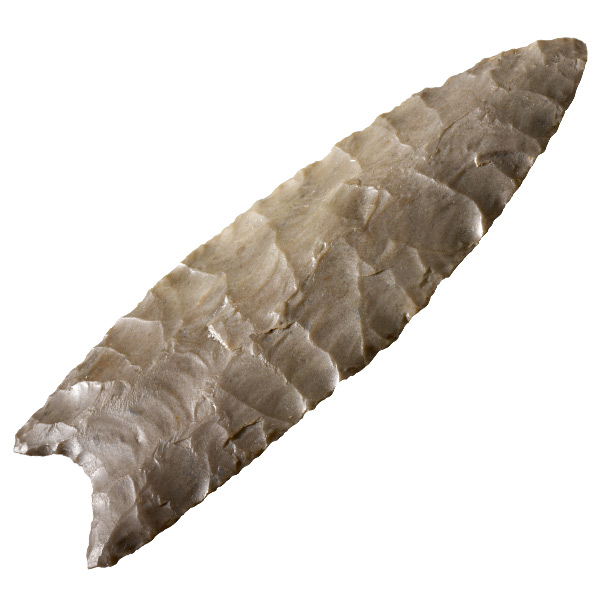
The clovis spear point is a projectile head that can be found all across America. Named after it's location of discovery, Clovis, New Mexico, the clovis point is made with bone or ivory, flaking both sides until a tip/point is made.
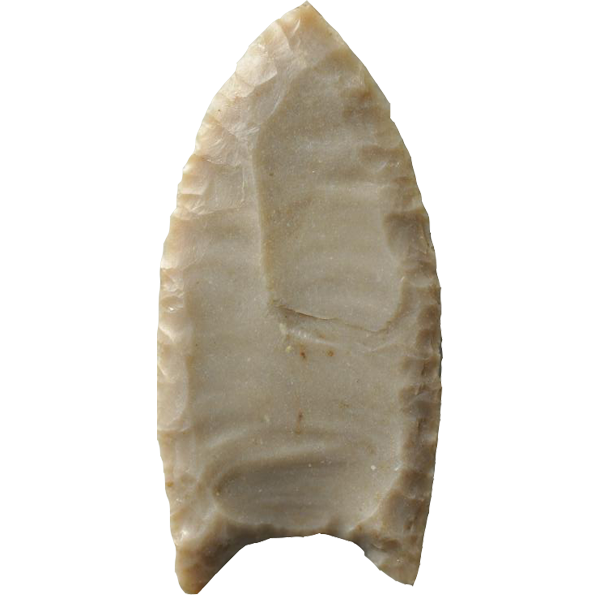
Folsom points are a distinct form of chipped stone projectile points associated with the Folsom Tradition of North America. The style of toolmaking was named after Folsom, New Mexico where the first sample was found within the bone structure of a bison in 1926.
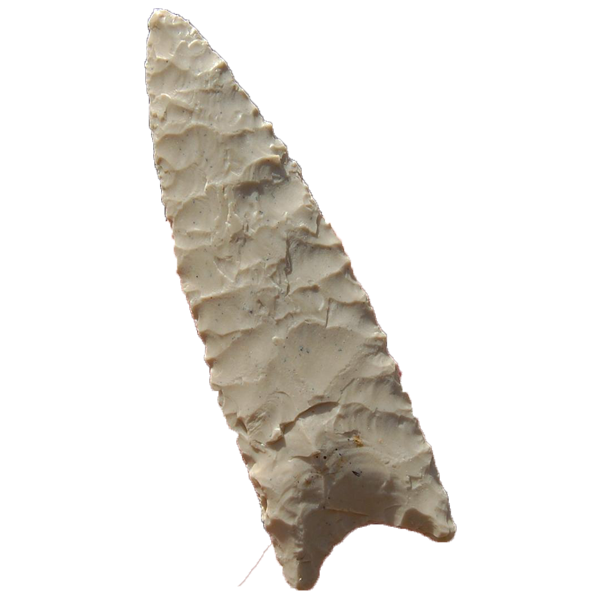
Here is some more information about this product that is only revealed once clicked on.
The term Archaic, meaning old, signals a series of new adaptations by the early people that occurred between 8,000 and 1,200 B.C. As the cold, moist climate of the Pleistocene Age changed to a warmer, drier one, the warming winds
melted the glaciers to the north and warmed the ocean water.
Due to warming, the Native population grew, and formed larger bands, while still staying mobile.
While the Archiac era continued, Native Americans expanded their tools, implementing throwing spears and axes for hunting, as well as mortars and pestles to crush seeds and nuts.
The people of the Archaic period began to vary the size and shape of their lithic (stone) points. Stone spear points, knives, scrapers, gravers, and drills were still used; however, the hunter-gatherers fashioned them
differently, with side or corner notches. Notching tells us how the points were attached to the spear or knife handle.
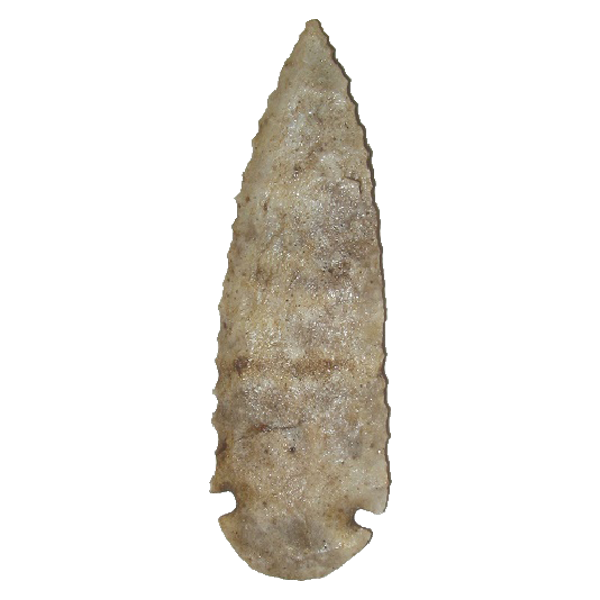
This point is most commonly found in the Great Lakes area and into New England. It is found with less frequency into eastern Illinois and northern Alabama. The Jacks Reef has sharp barbs on its shoulders and a base that is typically straight.
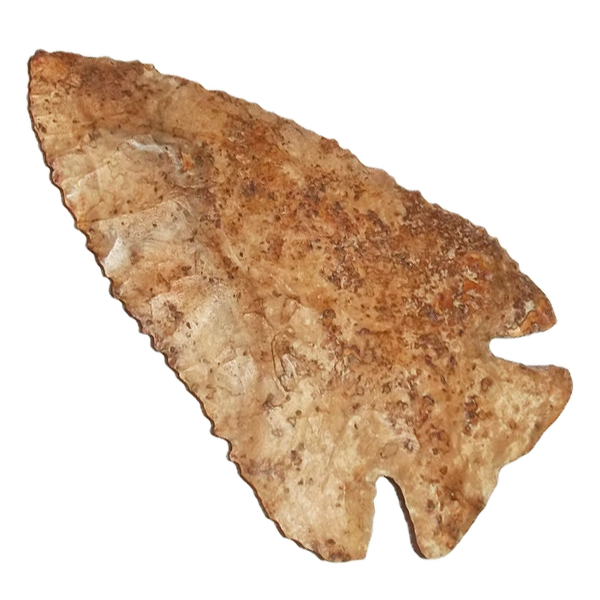
The Kirk Corner-Notched is a projectile point that is quite large when compared to its contemperaries. Edges can be both straight and serrated, however most have barbs at their base.
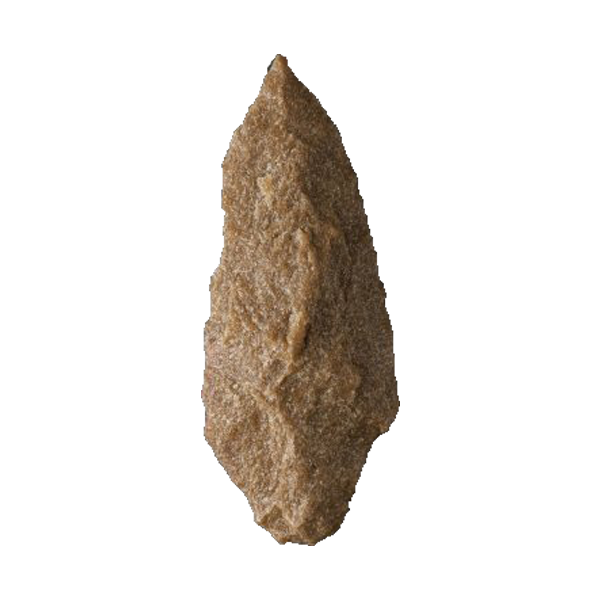
This is a narrow small to medium triangular point with a contracting stem. This point is commonly thick with an elliptical cross section. The blade is primarily excurvate, but may vary to straight. The shoulders are commonly weak and have an upward slope. The piscataway point was made during the late Archaic and early Woodland periods.
Most scientists think that the first people entered the Western Hemisphere from Asia over land that connected Siberia and Alaska at the end of the last great Ice (or Pleistocene) Age. Huge glaciers more than a mile thick covered large areas of land in what is now Canada. The glaciers lowered the sea level by 300 feet, exposing an immense, 1,000-mile-wide plain between Siberia and Alaska known as Beringia. Especially along the coast, the tundra-like plain teemed with animal and plant life, and the ocean provided abundant marine life. The early immigrants were unaware they entered a new continent as they hunted Beringia's game and gathered plants for food. When did the first people arrive and what was their culture like? While Native Americans believe that they have always been here, the first documented Paleoindian culture was found at an archaeological site near Folsom, New Mexico, in 1927. There, a distinctive spear point was found between the ribs of a type of bison that had been extinct since the end of the last Ice Age. Five years later near Clovis, New Mexico, a woolly mammoth kill and associated stone tools were uncovered, dating to 11,200 years ago. The hallmark of the Clovis culture is the lance-shaped fluted point. Although Clovis points are found across the continent, an especially large number of them are found in Virginia. Other stone tools found with the Clovis point include scrapers, gravers, perforators, wedges, and knives. Evidence uncovered so far in Virginia suggests that these tools were used to spear game, cut up meat, scrape and cut hides, and split and carve bone of deer, bison, and rabbit. Caribou, elk, moose, and possibly mastodon also may have been hunted. The effects of the glaciers made for long, hard winters and short, cool summers. In the Appalachian region, the mountain slopes were bare and tundra-like. People in the Shenandoah Valley and northern Virginia lived among grasslands, open forests of conifers, such as pine, fir, spruce, and hemlock, and occasional islands of deciduous trees. Slightly warmer weather south of present-day Richmond encouraged the growth of more deciduous trees such as birch, beech, and oak. The first people lived in groups which anthropologists today call bands, and camped along streams that flowed through the tundra-like grasslands and the open spruce, pine, and fir forests that covered Virginia at that time. A band was like an extended family. Due to the harsh climate, each band moved seasonally within a set territory to hunt and forage.
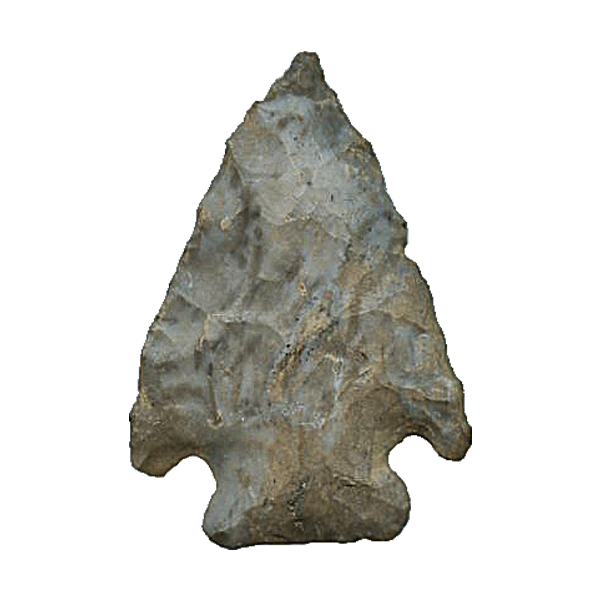
This point is most commonly found in the Great Lakes area and into New England. It is found with less frequency into eastern Illinois and northern Alabama. The Jacks Reef has sharp barbs on its shoulders and a base that is typically straight.
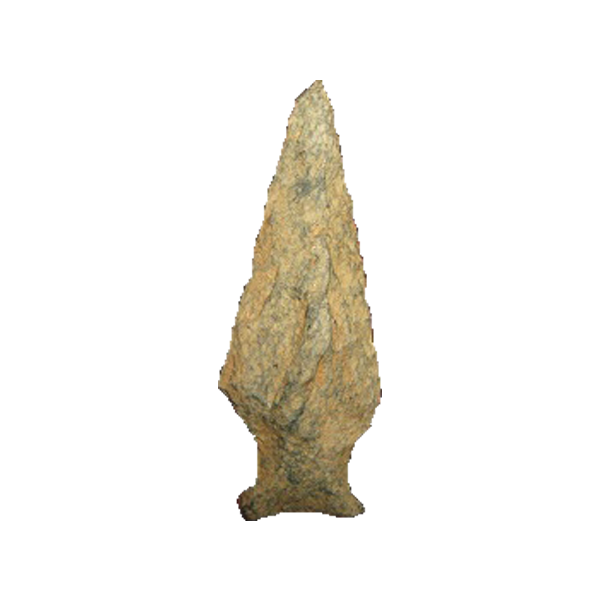
The Drybrook is slender and has rounded shoulders rather than sharp notches, the base is also rounded. This point is found most commonly in the Northeastern U.S, in New York, Pennsylvaina, and New Jersey.
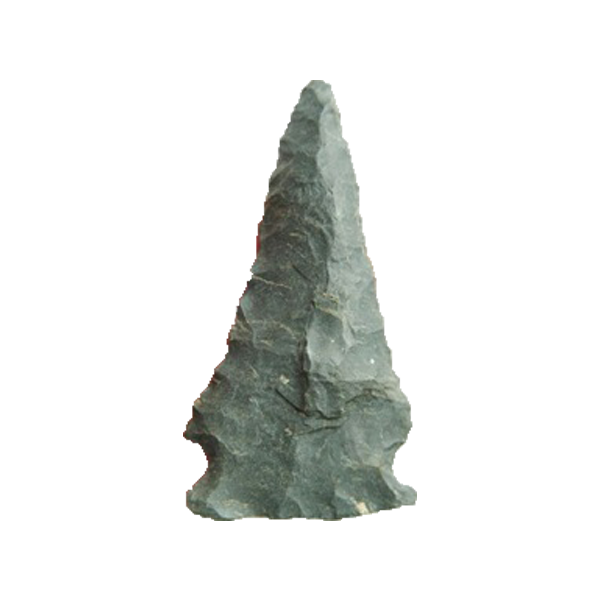
This point is primarily found in New York, into New England, and Pennsylvania. The Meadowood comes in notched and unotched varieties. Some archeologists believe that these points may be a sign of prestige.
Lorem ipsum dolor sit amet, consectetur adipiscing elit. Nullam scelerisque id nunc nec volutpat. Etiam pellentesque tristique arcu, non consequat magna fermentum ac. Cras ut ultricies eros. Maecenas eros justo, ullamcorper a sapien id, viverra ultrices eros. Morbi sem neque, posuere et pretium eget, bibendum sollicitudin lacus. Aliquam eleifend sollicitudin diam, eu mattis nisl maximus sed. Nulla imperdiet semper molestie. Morbi massa odio, condimentum sed ipsum ac, gravida ultrices erat. Nullam eget dignissim mauris, non tristique erat. Vestibulum ante ipsum primis in faucibus orci luctus et ultrices posuere cubilia Curae;